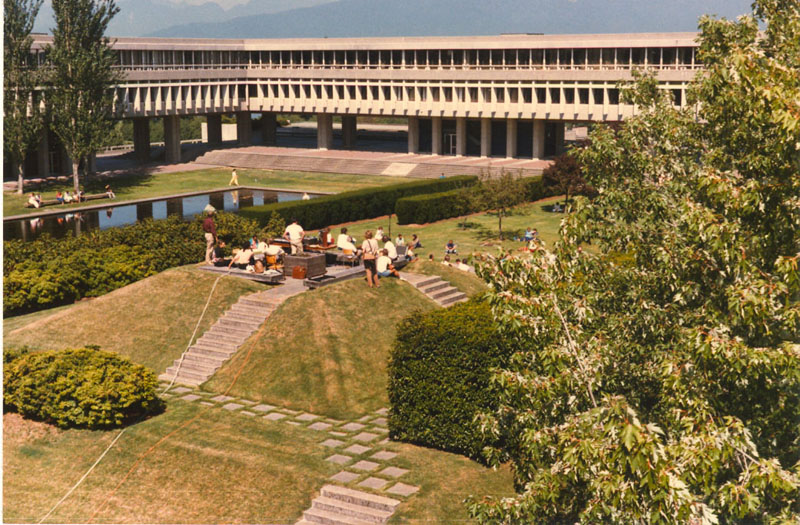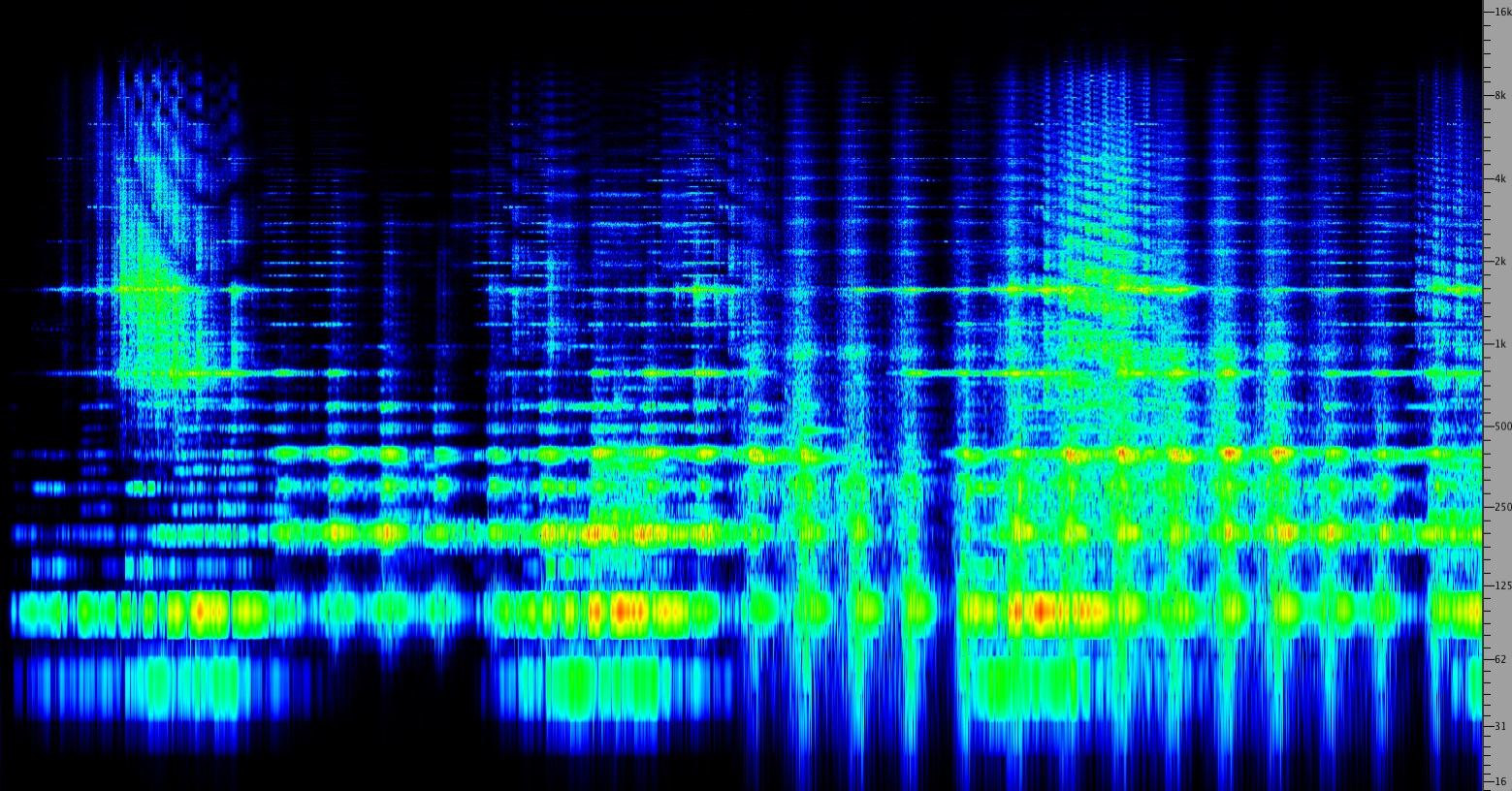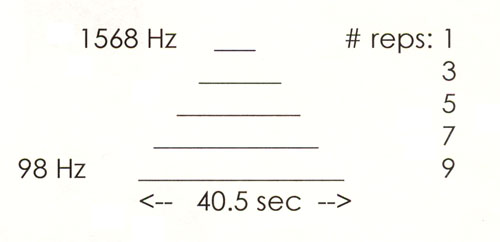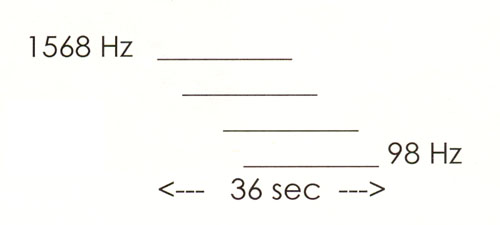Solar Ellipse is based on the I Ching hexagram, number 49, Revolution, comprised of the trigrams for fire and lake, the inverse of that of Wave Edge.
Solar Ellipse is available on the Cambridge Street Records and Wergo CD Digital Soundscapes, as well as the Cambridge Street Records album Sequence of Earlier Heaven.
![]() Sound Example available
Sound Example available

During a performance of Solar Ellipse in the
Academic Quadrangle, SFU, during ICMC 1985 (speakers in the 6th
floor balcony corners)
Structural Levels
II. 4.5 second epicycle, with 18 spatial positions in an ellipse, each with its own timbre (not illustrated in the sound examples)
144 repetitions @ 4.5 sec = 10:48 (duration of the piece)
72 repetitions -- Spiral Construction S -- 72 repetitions
| Low |
1
& 2 |
1
0
1 0 1 0 1 0
1 0 1 0 1 0 1 |
1
1
1 1 1 1 1 1
0 0 0 0 0 0 0 |
|
| 3
& 4 |
0
1
1 0 0 1 1 0
0 1 1 0 0 1 1 |
S |
1
1
1 1 0 0 0 0
1 1 1 1 0 0 0 |
|
| 5
& 6 |
0
0
0 1 1 1 1 0
0 0 0 1 1 1 1 |
S |
1
1
0 0 1 1 0 0
1 1 0 0 1 1 0 |
|
| High |
7
& 8 |
0
0
0 0 0 0 0 1
1 1 1 1 1 1 1 |
1
0
1 0 1 0 1 0
1 0 1 0 1 0 1 |
| Low |
1
& 2 |
0 0 0 0 0 0 0 1 1 1 1 1 1 1 1 | 1 0 1 0 1 0 1 0 1 0 1 0 1 0 1 | |
| 3
& 4 |
0 0 0 1 1 1 1 0 0 0 0 1 1 1 1 | S |
1 1 0 0 1 1 0 0 1 1 0 0 1 1 0 | |
| 5
& 6 |
0 1 1 0 0 1 1 0 0 1 1 0 0 1 1 | S |
1 1 1 1 0 0 0 0 1 1 1 1 0 0 0 | |
| High |
7
& 8 |
1 0 1 0 1 0 1 0 1 0 1 0 1 0 1 | 1 1 1 1 1 1 1 1 0 0 0 0 0 0 0 |
Read vertically, the mixing scheme represents the binary numbers from 1 to 15, and is the equivalent of the rule:

Spectrogram of the opening of the work

